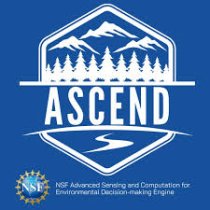Grapes, Vines and Towers: A Look at the Engineering Behind a NEON Site
September 9, 2010
If you view the elements of a NEON site in isolation, they’re pretty simple. NEON’s plans to build its 62 sites don’t call for brand new inventions or earth shattering designs; they’ll utilize existing, tried-and-true technology that has been proven to work well for scientific data collection in the past. And yet, how simple is it – really – to build a reliable remote network data collection system delivering information in real-time that could encounter anything from subzero temperatures to curious deer? Everyone knows you can’t have the ends without the means.
Since NEON’s inception, NEON engineering staff have been hard at work designing, testing and deploying technology that will result in an efficient, safe and reliable NEON site. Obviously, that’s not without its challenges, such as creating the most resourceful strategies to collect data from several remote locations, developing an engineering architecture that enables real time monitoring of all locations’ state of health, and the ability to fix problems from afar when systems falter. To counteract these challenges, the team’s goal is to develop and deliver products that support maintainability and sustainability across the Observatory. “Our vision for the NEON data acquisition architecture is to provide an open source system that is not dependent on any proprietary technologies. We want that researchers to be able to use the technology directly or improve on it, which would benefit the community as a whole,” explained Tom Cilke, NEON’s Director of Engineering. “The architecture is designed to be used nearly anywhere in the world.”
To address the need for managing a data stream from remote locations, engineers have devised a data acquisition architecture called Virtual Instrumentation Network Environment (eVINE). The system will allow NEON engineers to monitor the health of the equipment at a NEON site up to hundreds of miles away from NEON headquarters, with the capability of interfacing with all types of sensors and locally store and transmit data in real time. This will make it easier for engineers to troubleshoot and fix problems remotely or support a local technician on site. A component of eVINE called the Grouped Remote Analog Peripheral Equipment (GRAPE) will send sensor measurements digitally from all NEON sites to NEON headquarters, enabling NEON to efficiently collect data products from a distance. GRAPEs, which will be used on all FIU towers, soil arrays, field measurement stations and aquatic arrays, are sensor-to-network interface modules that convert sensor data into a digital format that is easily sent over standard Ethernet or internet protocols. Each sensor will be equipped with smart technology that uses memory chips to store information about the sensor such as identification information, sensor type, interface requirements and calibration data. The sensor information along with the sensor data is read by a GRAPE, which uses the information to correctly interface with the sensor and send the data to NEON headquarters via the Internet or private network connection. In order for GRAPEs to function appropriately within different environments, NEON engineers designed the modules to be highly reliable. For example, if the local Ethernet network connection is lost, each GRAPE is capable of storing sensor data in its own memory as a backup until the network is restored. In addition, NEON engineers designed the GRAPE with simplicity in mind so that technicians can easily install sensors and replace parts when needed.
NEON engineers have found a way to eliminate the need for numerous connection cables and wires found in traditional sensor technology designs, which could be confusing to technicians attempting to repair equipment. All sensors will connect to a nearby GRAPE using standard connectors to facilitate installation, minimize cable lengths, reduce electronic noise and eliminate wiring errors. The GRAPE only requires a single power over Ethernet (POE) cable to connect into the local network. While as many as 10 to 20 GRAPEs may be installed at a single site, the compact GRAPE design is intended to be less obtrusive and more acceptable for communities or environments that may be located in close proximity to a NEON site. In fact, the GRAPE will help NEON stand out from other remote monitoring systems; not only does using the GRAPE provide a more reliable and functional capability, but it also gives the NEON Observatory a clean, professional and unique look. “We have an obligation to the nation to provide a cutting edge capability. Anyone from the public, government or science should say ‘wow’ and be totally impressed when they see a NEON facility for the first time. If not, then we have not done our job, ” said Tom Cilke. The NEON data acquisition design creates a sustainable and dependable environment for users of NEON equipment. Whether it’s a means to the end or an end to the means, components of the eVINE design have everything covered to create a stable observatory to function for decades.

